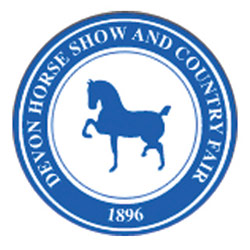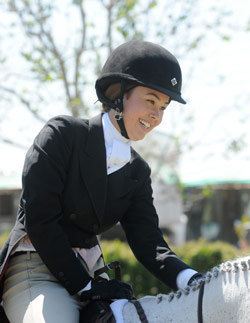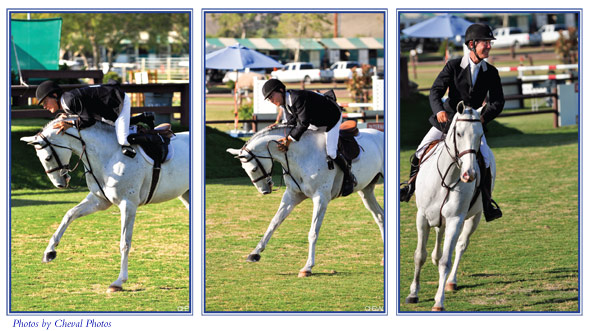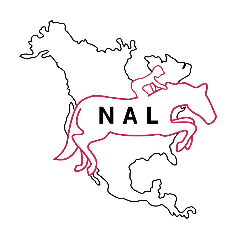By Jackie McFarland
We’re now in the middle of the summer season, with plenty o’horse showing remaining and a fabulous fall ahead. June was chock full of fantastic competition from north to south and overseas. See below for a wrap-up of the Blenheim June Series. With an international feel on the International field the show jumping was super. Hunters were hot, with high scores and impressive handy rounds.
BLENHEIM $150,000 JUNE SERIES WRAPUP
Finishing up four weeks right before the 4th of July gave riders, owners trainers, grooms and families a chance to celebrate independence day after four fantastic weeks in San Juan Capistrano. With over $150,000 in prize money including a $30,000 Grand Prix each weekend, Zone 10 Young Rider Selection Trials, a USHJA Hunter Derby, Zone 10 Pony Hunter Finals, Open Jumper Classics, Children’s Pony Hunter Divisions and Green Rider Equitation, the range of classes offered something for every rider, plus Hilltop VIP, Medal Club, Kids Days and two excellent exhibitor parties.
The competition is hot and the weather cool…
WEEK ONE:
NAJYRC Teams Named
After several successful years at the North American Junior and Young Rider Championships (NAJYRC) that played a role in producing a stellar group of young Grand Prix riders, including Karl Cook, Lucy Davis and Ricky Neal, the 2011 Zone 10 Teams consist of the west coast’s next group of solid show jumpers.
Beginning the final qualifying rounds for NAJRYC on Friday and culminating on Sunday morning, points earned were tallied from this and previous shows for the naming of the Zone 10 NAJYRC Young Rider and Junior Teams. Taking on the challenges of Linda Allen’s courses this weekend, the ten top point earners got a taste of the tracks to come later this summer at the beautiful Kentucky Horse Park in Lexington.
Zone 10 Young Rider Team
Faustino – Cayla Richards | Esperanto – Kendall Skreden | San Diego – Danielle Korsh
Hot Pants – Sage Flynn | ALT: Gaja 20 – Jocelyn Neff
Zone 10 Junior Team
Canasucre – Hannah Warde | Corralino – Madison Bradshaw | Ashtin’s Obsession – Killian McGrath
Union Jack – Brittany Albrecq | ALT: Pomme D’Api – Viva Hallinan
Hail the King of Hunters and His Trusty Steed
John French aboard the Holsteiner stallion Crown Affair (owned by Yellow Dog Farm) not only won one of the last qualifiers of the 2010/2011 High Performance Hunter Challenge season during May’s Ranch & Coast Classic but had a repeat performance at one of the first qualifiers for the 2011/2012 season. Thirty couples came to play on the large grass field. The challenging course built by Joe Lombardo meant high scores were few and far between but by the end, eleven of twelve pairs earned scores in the eighties and returned for the Handy Round.
The second round asked riders to pilot their hunters smoothly through an s-shaped line from fences three through five, a hand gallop towards home at fence ten directly to a trot jump at the in-gate. As often seen in the Handy Round, positions shifted as rails and riders fell. The top two horses, the aforementioned Crown Affair and Symon (owned by Alison Baileys) both ridden by one of our nation’s best John French, handled the Handy Round with style and held their positions finishing first and second.
A mix of professionals, amateurs and juniors claimed third through twelfth: Melissa Doddridge was third on Bentley and seventh aboard Delux, Hope Glynn rode Sabrina Hellman’s Woodstock to fourth, Glynn’s client Erin Bland rode her own Weatherly to fifth, Gabbi Langston was sixth on Azlan, unexpected rails down caused Jenny Karazissis and Forbes as well as Devon Gibson with Copperfield to bump down to eight and ninth, Tiffany Sullivan was tenth on her five-year-old Easy Company, a crash through a jump late in the course dropped Gretchen Lof and Shine on Me down to eleventh and Nick Haness was poised to garner a top prize on Catwalk after a gorgeous ride, when a surprise stop at the final trot jump caused a fall and the pair finished twelfth.
It’s a First First for Lane Clarke and Granville’s Casseur De Prix
As expected, course designer Linda Allen built a demanding track for the $30,000 Blenheim Classic Grand Prix presented by the Orange County Register. At the end of the round one, nine entries managed to jump without fault.
Although many seasoned equestrians were part of the mix, it was 25-year-old Australian Lane Clarke aboard Granville’s Casseur de Prix who took home the top prize by delivering the only double clear of the day.
“This is only the fourth grand prix [Granville’s Casseur de Prix] and I have done together so to come out with a win this early in our partnership is pretty amazing,” smiled Clarke. Although he navigated both the first and second round courses without fault, Clarke still recognized many difficulties posed by Allen’s design.
“Linda Allen always builds difficult and unique courses,” commented Clarke. “Track-wise, it was beautiful to look at and made a lot of sense, but it was not easy to ride clean.”
As the second duo of nine to take on the shortened track, Clarke felt the pressure of the seven entrants that were still to follow and chose an alternative path to the final fence on course, a daringly tight inside turn that resulted in a time of 48.07 and the win.
The second place team took a more conservative route. Jumping clean but going just over the 50 second jump-off time allowed, Rusty Stewart aboard the precocious seven-year-old Bristol masterfully negotiated the track but stopped the clock at 50.22 to add one time fault to their otherwise pristine performance.
Finishing third, Francie Steinwedell-Carvin and Taunus were the first to negotiate the shortened track but had a rail midway through the course ending with four faults in a time of 48.67. Steinwedell-Carvin also went clean on Twistar, but the pair struggled in the second round with a run-out, rails and then an unfortunate fall and elimination from the round, placing them ninth.
Late in the jump-off order, the master hunter rider mentioned above, John French, aboard Chawi De Laubry (owned by Mountain Home Stables) was clean as he approached the final fence on course. Riding for the win, French followed the lead of some of his fellow competitors and opted for the inside turn. The crowd groaned as the pair had a disappointing run-out, followed by a rail on the second attempt for an eighth place finish
WEEK TWO:
Ups and Downs
The Blenheim EquiSports June Classics I & II were memorable for multiple reasons. With the usual ups and downs, rising hunter star Samantha Sommers, who was Champion Week I on Iwasaki & Reilly’s Small Kiss, took an unfortunate tumble in the jumper ring last week sending her shoulder into disrepair for a period. Look for an interview with Sam in an upcoming issue. We hear that Joie Gatlin, who also had an unusual dismount in the jumper ring and did a number on her knee, is doing well and will be visiting the show this week. We wish them both a speedy recovery. On a high note, Iwasaki & Reilly’s Small Affair earned a pair of 95s in the junior hunter ring with Olivia Esse aboard. Olivia wrote a great piece about the Devon Horse Show in the June Series Week One issue.
Internationally Inspired Show Jumping
It was superb to see several countries represented in both the first round and the jump-off of the $30,000 June Classic II Grand Prix – Puerto Rico, Australia, Brazil, the United States and predominantly Mexico. Of the forty horse and rider combinations who came to play, seventeen qualified for the jump-off.
Course Designer Scott Starnes set a track to suit the range of experience in the class, which was a mix of young horses and riders to Olympic level riders. With two combinations, a few scope tests and a tight time allowed, the collective group rose to the occasion. Six couples rode without lowering the height of a jump, but incurred time faults, including American Molly Talla who stopped the clock a mere .008 seconds over the time allowed aboard Camaron Hills Quick Dollar.
“Ideally I want ten to go clean,” commented Starnes before the class commenced. “I didn’t want to over face the young ones yet still challenge the field. I’d rather more go clean than to have the course be too difficult.”
With a large and aggressive group competing in the jump-off, the top ten finishers were all double clean. First to return in the second round was Jaime Azcarraga of Mexico aboard his own Celsius. He set the pace, going clear in 43.98 and held the lead until hometown heroes Susan Hutchison and El Dorado 29’s Cantano galloped in eight entries later with a blazingly fast, clean ride over the shortened track in 41.91. Azcarraga returned on his second mount, Gangster, trying to catch Cantano and steal back the leading spot. With a time of 42.41, he beat his first horse but not Hutchison’s ending the day third and fifth. American Rusty Stewart rode Grey Fox Farm’s Bristol efficiently in 43.75, picking up fourth for their efforts. Then along came Agustin Aguayo aboard his own Pro Star de la Nutrin who delivered a clean performance in 41.33 for the win, bumping Hutchison to second.
Through an interpreter, Aguayo explained that he bought Pro Star de la Nutrin when he was a three-year-old. Now competing as an eight-year-old, this was only their second grand prix; the first was in Jalapa (Mexico). Competing here at Blenheim for the next two weeks, the team will return to Mexico for the Pan Am Trials later this summer.
The thrills and spills kept spectators engaged from beginning to end. Salvador Onate lost both his stirrups halfway through the course and impressively still managed to ride without fault, qualifying for the jump-off on Paldatus. While Francois Esteves was almost jumped off by ET 14 Mercedes Benz in round one, Luis Alejandro Plasencia did part ways with Dante at the final fence of the jump-off.
Internationally speaking, the final placings included two Mexican riders and two American riders in the top four, with Australians Harley Brown and Lane Clarke as well as Puerto Rico representative Mark Watring, who all compete actively in California, in the top twelve. Overall ten of the top twelve ribbons went to international riders.
Another International Heyday
An impressive field of thirty-eight horse and rider combinations representing five countries ventured onto the Blenheim International Field for the $30,000 June Classic III Grand Prix, presented by the St. Regis Monarch Beach Resort. Course designer Pierre Jolicoeur set a fair but challenging track, posing questions that kept riders on their toes (and in their heels). After a tough first round, only eight duos managed to ride without fault and earn a ticket to the jump-off. While the second round had several solid attempts, the well-seasoned Olympian Antonio Maurer of Mexico masterfully navigated the shortened track to secure the win aboard Francisco Del Rio’s Callao.
“In the jump-off I was fast, but not crazy fast,” said Maurer following his victory gallop. “I’m working my horse back up and this is only his second grand prix after being off for a year. He was double clear in last week’s grand prix and he won today; I couldn’t be happier.”
In addition to being pleased with his mount, Maurer complimented Jolicouer’s course.
“Pierre built a fair track,” noted Maurer. “There were technical questions and elements of rideability but it was designed very fair and very smart. The time was a bit of a factor for some but the field was actually very balanced.”
As the first to jump clean in round one, Brazilian Francois Esteves christened the shortened track aboard his own E.T. 14 Mercedes Benz, setting the stage for his fellow competitors with a clean ride in a time of 38.11 seconds, ultimately finishing fifth. Maurer galloped onto the grass next and shaved 1.37 seconds off, stopping the clock clean in 36.74, taking the lead. Continuing the double clear rounds, Australian Harley Brown and his talented World Cup horse Cassiato (owned by Oak Park Group, LLC) earned third place honors for their neat and clean 37.42 effort. Salvador Onate of Mexico aboard Paldatus was close to catching Maurer, stopping the clock in 36.94, just two tenths of a second shy of taking over the top spot, and finished in the second position. Jaime Azcarraga and Celsius picked up an unfortunate four faults at the second fence in the second round, finishing seventh.
Next in the order of go was nineteen-year-old Tina DiLandri and Avargo. The only American to advance to the second round, DiLandri laid down a stellar performance, leaving all the rails untouched in 37.55 seconds to earn fourth place in a difficult field.
Although eight riders managed to navigate Jolicoeur’s first round course without fault, many more racked up faults by exceeding the 81-second time allowed, dislodging rails or both. “I tried to build the course so it catered to the rider and was safe for the horse,” said Jolicoeur. “The jumps were not huge but some of the elements were technical and presented decisions. There were many areas on the course where riders could pick up the pace and it was left up to them to do it.”
WEEK FOUR:
International Fireworks on the Field
Perfect weather during the start of the Fourth of July weekend greeted the thirty-four horse and rider pairs at the Blenheim International Field for the $30,000 Red, White & Blue Grand Prix. Course designer Anderson Lima of Brazil set a technical track with sixteen efforts as well as a tight time allowed. Six pairs successfully rode without fault in the first round, four going double clear. Mexican rider Salvador Onate aboard Charro balanced speed and precision to secure the victory.
Going twenty-ninth in the order, Onate had the advantage of seeing the track. “When I was walking the course, I thought it would be a difficult run to make a clear round,” Onate said. “I had to focus on the strides, because there were many options. I had the opportunity of watching a couple of riders do it, and then I took my options.”
The second pair to attempt the course, last week’s grand prix winners Antonio Maurer and Callao (owned by Francisco del Rio) were the first fault-free pair, and remained the only clean until Susan Hutchison and El Dorado 29’s Cantano blazed through the course without fault at almost ten seconds under the time allowed. The crowd roared, animated by her tempo and the guarantee of a jump-off.
Lane Clarke and Granville’s Casseur de Prix (owned by Granville Equine), winners of the first grand prix in the Blenheim June Series, received a hearty welcome from the crowd. Though they had no jumping faults and appeared to have a good pace, the pair finished with a heartbreaking time fault when they stopped the clock just three-tenths of a second over the time allowed.
The tight turn to the CardFlex jump, fence six of the first round, was a trouble spot for many of the riders. Fences 11b and 11c of the second combination on the course also caused multiple jumping faults. Regarding Lima’s design, his first in California, Onate commented, “I liked the course a lot. Lima designed a great course, and I hope he comes back next year.”
With a smile Onate added, “This is my first year here and hopefully I can come back, too.”
Antonio Maurer returned on his second of three mounts, Francisco del Rio’s As Hyo Hugo, and turned in a beautiful clean round. Immediately following Maurer, Duncan McFarlane on Simone Coxe’s Mr. Whoopy navigated the course without fault to join the jump-off group.
A dozen entries, beset with refusals, eliminations and jumping faults, went before up-and-coming grand prix rider Tina DiLandri aboard Avargo finished the first round clean. It was DiLandri’s second mount, and they were the twenty-seventh pair to gallop on the field. There were now five duos to return. Salvador Onate and Charro entered the ring as DiLandri exited, turning in a fantastic clear round just under the time allowed and then there were six coming back.
Maurer and Callao returned to the ring and finished with a double clear round in a quick 39.012. Hutchison and Cantano raced around the course, and even managed to kick it up a notch during the long gallop to the final jump. Though they appeared to jump it clear, a rail fell as they landed and the pair ended with four jumping faults.
Duncan McFarlane and Mr. Whoopy attempted the course next, and though they seemed to have the speed to challenge Maurer, they dropped a rail at the penultimate obstacle and finished with four faults.
Maurer piloting As Hyo Hugo followed McFarlane and turned in another double clear performance, but Maurer’s more conservative approach to the track ended with a time of 40.575. Tina DiLandri and Avargo also turned in a double clear round in 40.220 and were sitting in second place as the final couple of Salvador Onate and Charro entered the ring.
The crowd grew silent as Onate and Charro cleared each obstacle, and when the time of 38.774 was announced, the stands erupted – the duo had won the grand prix by less than one second.
SOCIALLY SPEAKING
Exhibitor Evenings
Blenheim EquiSports and Equ Lifestyle Magazine hosted not-to-be-missed social occasions. Guests enjoyed food and fun while searching for hidden ‘treasures’ at San Juan Capistrano’s Vintage Steakhouse at the Great Train Robbery party. The following week competitors enjoyed an evening at the lovely Arden Cottage at Blenheim Farms. Located only a short stroll or golf cart ride away, it was truly an ideal location for unwinding, appetizing and socializing. The social calendar continues in late July through August with an innovative mix of events from Mardi Gras to Casino Nights and more.
BBQ & Go Horseless
Kids of all sizes had a fun and competitive day During Blenheim June III. On Saturday everyone enjoyed a post Zone 10 Pony Finals BBQ in the afternoon as well as a JustWorld International Horseless Horse Show. What could be better than supporting a great cause while having a great time?
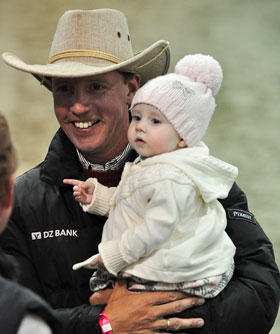
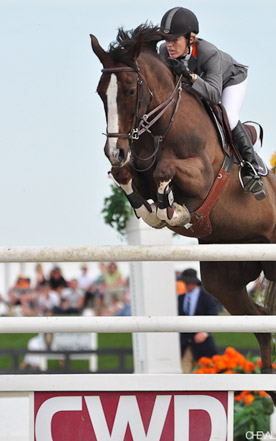
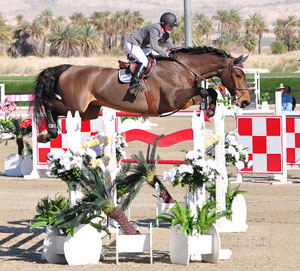
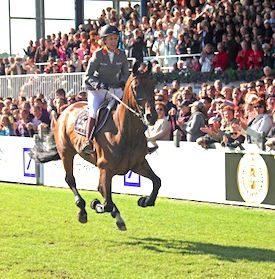
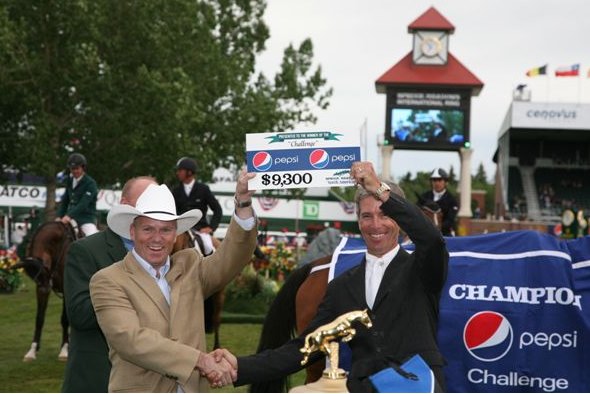
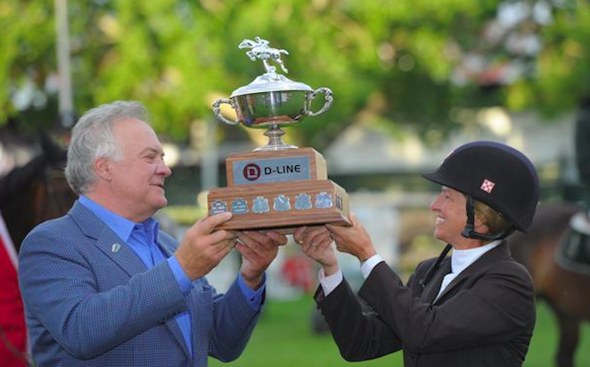

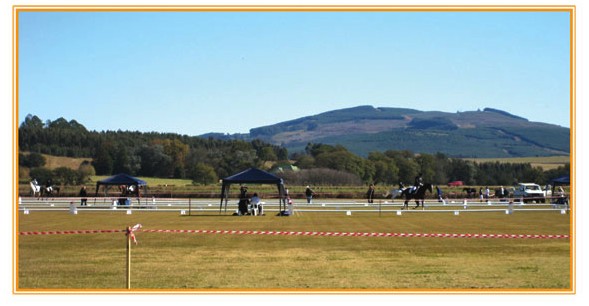

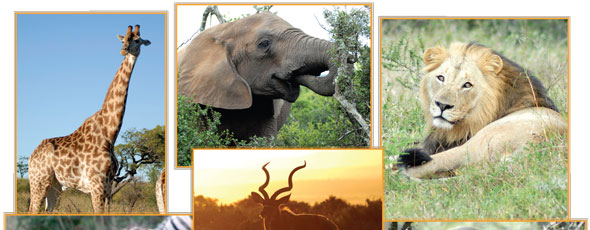
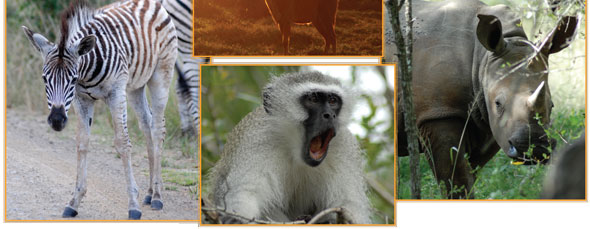
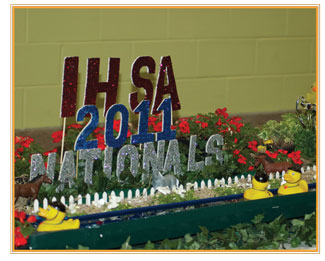 regardless of their financial position, IHSA essentially cuts out almost all the expense yet still makes competition possible. Regardless of past riding experience, IHSA participants can learn as well as compete in hunt-seat, with classes ranging from walk/trot and Open Equitation divisions to the prestigious Cacchione Cup.
regardless of their financial position, IHSA essentially cuts out almost all the expense yet still makes competition possible. Regardless of past riding experience, IHSA participants can learn as well as compete in hunt-seat, with classes ranging from walk/trot and Open Equitation divisions to the prestigious Cacchione Cup.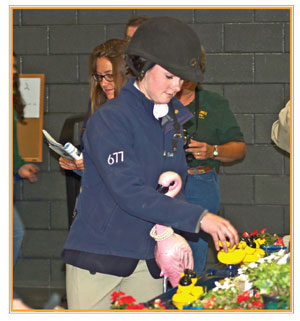 IHSA Nationals: Ducks and Don’ts
IHSA Nationals: Ducks and Don’ts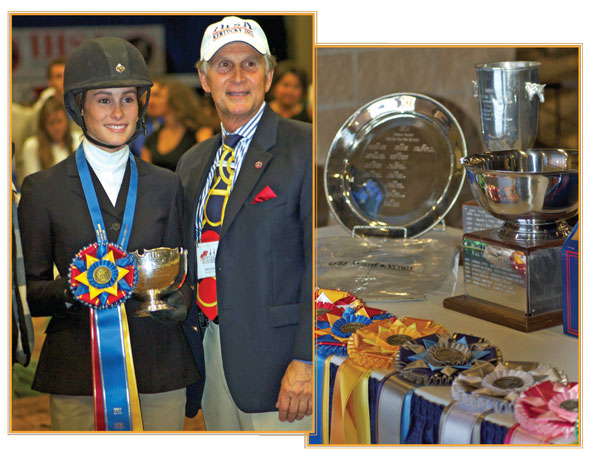
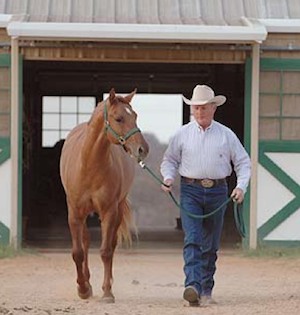 known for his ability and success with horses. He preps up to 300 young horses for major sales and breaks about 100 horses per year. While I’m off to Spain for two weeks with my family, my trainers thought it would be the perfect time to send Scotty to Roger for some discipline training. When I delivered Scotty to Roger’s place, I was immediately impressed with his facility. Roger spent some time with me so I could ask a few questions and feel comfortable with leaving my sizable investment (literally and financially) with him.
known for his ability and success with horses. He preps up to 300 young horses for major sales and breaks about 100 horses per year. While I’m off to Spain for two weeks with my family, my trainers thought it would be the perfect time to send Scotty to Roger for some discipline training. When I delivered Scotty to Roger’s place, I was immediately impressed with his facility. Roger spent some time with me so I could ask a few questions and feel comfortable with leaving my sizable investment (literally and financially) with him.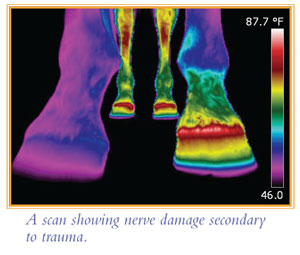 terms cause anguish and often unanswered questions for horse owners and trainers. When ‘saddled’ with a soundness issue, it can be comforting to literally get a picture of what is happening. In color no less. Enter Equine Infrared (IR) – an International Network of Certified Thermographers, trained in the application of Equine Thermography.
terms cause anguish and often unanswered questions for horse owners and trainers. When ‘saddled’ with a soundness issue, it can be comforting to literally get a picture of what is happening. In color no less. Enter Equine Infrared (IR) – an International Network of Certified Thermographers, trained in the application of Equine Thermography.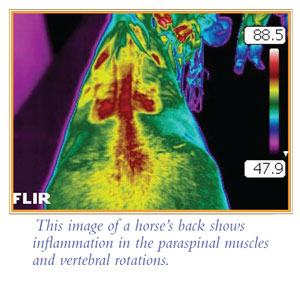 Thermography is also used as a tool in human diagnostics, but its applications are just beginning to be put to use in the sport horse industry. In the early ’90s, attempts were made to put IR imaging into practice for horses, but with large, bulky cameras, and little knowledge about how to prepare an image, the method lost popularity.
Thermography is also used as a tool in human diagnostics, but its applications are just beginning to be put to use in the sport horse industry. In the early ’90s, attempts were made to put IR imaging into practice for horses, but with large, bulky cameras, and little knowledge about how to prepare an image, the method lost popularity.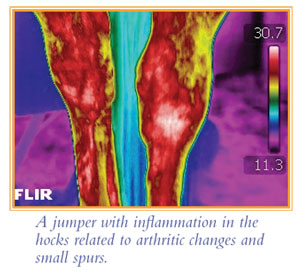 “But we use IR in everything from horses that have slipped and fallen and sustained nerve damage, to small fractures to hoof issues. When an area is inflamed, we can see it and then assess it further to find the source of the irritation.”
“But we use IR in everything from horses that have slipped and fallen and sustained nerve damage, to small fractures to hoof issues. When an area is inflamed, we can see it and then assess it further to find the source of the irritation.”